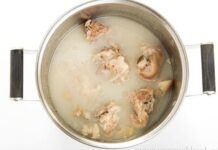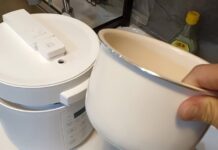1Benefits of Breastfeeding
Advantages for the Baby
Breast milk is the ideal food for infants due to the following reasons:
- Breast milk contains the perfect balance of fat, sugar, water, protein, and minerals necessary for an infant’s growth and development. It also adapts to meet the baby’s nutritional and developmental needs at each stage.
- Breast milk is more easily digested than formula.
- Breast milk contains antibodies that protect infants from infections such as ear infections, diarrhea, respiratory illnesses, and allergies.
- It reduces the risk of Sudden Infant Death Syndrome (SIDS).

Advantages for the Mother
Breastfeeding offers several benefits for mothers as well:
- It stimulates the release of oxytocin, a hormone that aids in uterine contraction. This helps the uterus return to its pre-pregnancy size and shape, and it can also reduce postpartum vaginal bleeding.
- Breastfeeding can make it easier for mothers to return to their pre-pregnancy weight.
- It may lower the risk of breast and ovarian cancer.

2Things to Note When Expressing Breast Milk
If you plan to express milk for your baby when you’re unable to breastfeed directly, keep the following in mind to ensure proper storage:
– Use glass bottles, hard plastic containers without BPA, or zip-top bags to store the milk.
– Wash your hands thoroughly and sterilize all equipment used for expressing and storing milk to minimize bacterial contamination.
– Clean the nipple area and apply a warm compress to the breast for 2 minutes before expressing to facilitate milk flow and make it easier to express.
– Do not store leftover milk that your baby has already drunk from.

– When expressing milk for storage, leave some space at the top of the container as the milk will expand when frozen. Chill the milk as soon as possible after expressing.
– Do not mix freshly expressed milk with previously frozen milk.
– Label each container with the date and time of expression for easy reference.
– Ensure that the refrigerator is clean, odor-free, and that the milk is not stored next to raw food.
3How to Store Breast Milk in the Fridge
Things to Note When Storing Breast Milk in the Fridge
Proper storage of breast milk is essential to ensure its longevity. Freshly expressed milk should be stored correctly and at the right temperature. Milk can be kept at room temperature (above 26°C) for up to 1 hour, and in a cooler (below 26°C) for up to 6 hours.
If you don’t intend to feed your baby immediately after expressing, store the milk in the fridge as soon as possible. It can be kept in the fridge (chiller compartment) for up to 24 hours.
In a small fridge (mini-fridge), milk can be stored for up to 2 weeks. In a regular fridge freezer, it can last for up to 3 months. And with a dedicated freezer, you can safely store milk for up to 6 months.

When storing milk in the freezer, first keep it in the chiller compartment for 8 to 12 hours before transferring it to the freezer.
Similarly, when thawing milk, move it from the freezer to the chiller compartment for half a day to a full day before bringing it to room temperature. This gradual temperature change helps preserve the milk for longer.
If using bags to store milk, consider purchasing larger zipper bags (available in supermarkets) to hold 5-7 milk bags. This extra layer of protection helps prevent bacterial contamination and minimizes exposure to food odors.

Opt for refrigerators with multi-directional air flow and antibacterial systems. Multi-directional air flow ensures even cooling throughout the compartments, while antibacterial systems eliminate odors and prevent food odors from mixing.
Arranging Breast Milk in the Fridge
Arrange the milk bags neatly in the fridge, with the oldest bags at the front and newer ones at the back. Label each bag with the expression date and time for easy reference. If you express a large volume of milk, consider investing in a fridge with a spacious freezer compartment and multiple sections for easier storage.

How to Thaw and Warm Breast Milk from the Freezer
Freezing is the best method for long-term milk storage. However, it’s important to know how to properly thaw and warm frozen breast milk.
To thaw milk, place it in the chiller compartment to gradually defrost. Then, use a double boiler or a milk warmer set to 40°C to heat the milk. This temperature ensures that the milk retains its nutritional value.

Do not thaw milk at high temperatures or immerse it in boiling water, as this will destroy its nutritional content. Similarly, do not use a microwave to warm stored milk as it can damage the milk and its nutrients.
After warming the milk, gently shake it to mix any fat that may have separated during freezing. Avoid vigorous shaking, as it can break down the milk’s antibodies and natural nutrients.
Always test the temperature of the milk before feeding it to your baby. If your baby doesn’t finish the milk, discard any leftovers; do not store or mix it with fresh milk.
4Changes in Breast Milk’s Smell, Taste, and Color After Refrigeration
While refrigeration helps extend the shelf life of breast milk, you may notice changes in its smell, taste, and color after thawing. This is a normal occurrence.
Breast milk contains an enzyme called Lipase, which can give it a soapy smell. This enzyme helps break down fats into fatty acids, making it easier for your baby to digest and absorb fat-soluble nutrients.

While this won’t harm your baby, some infants may be averse to the smell and refuse to drink it. To neutralize the smell, you can gently boil the milk after expression and let it cool before freezing. However, this method may reduce the milk’s antibody content.
If the thawed milk has an unbearably strong odor, discard it, as it may be contaminated. Review and adjust your milk storage process as needed.
We hope that our childcare tips have empowered you with valuable knowledge on raising a healthy child. Feel free to leave a comment below if you have any questions or feedback!


































